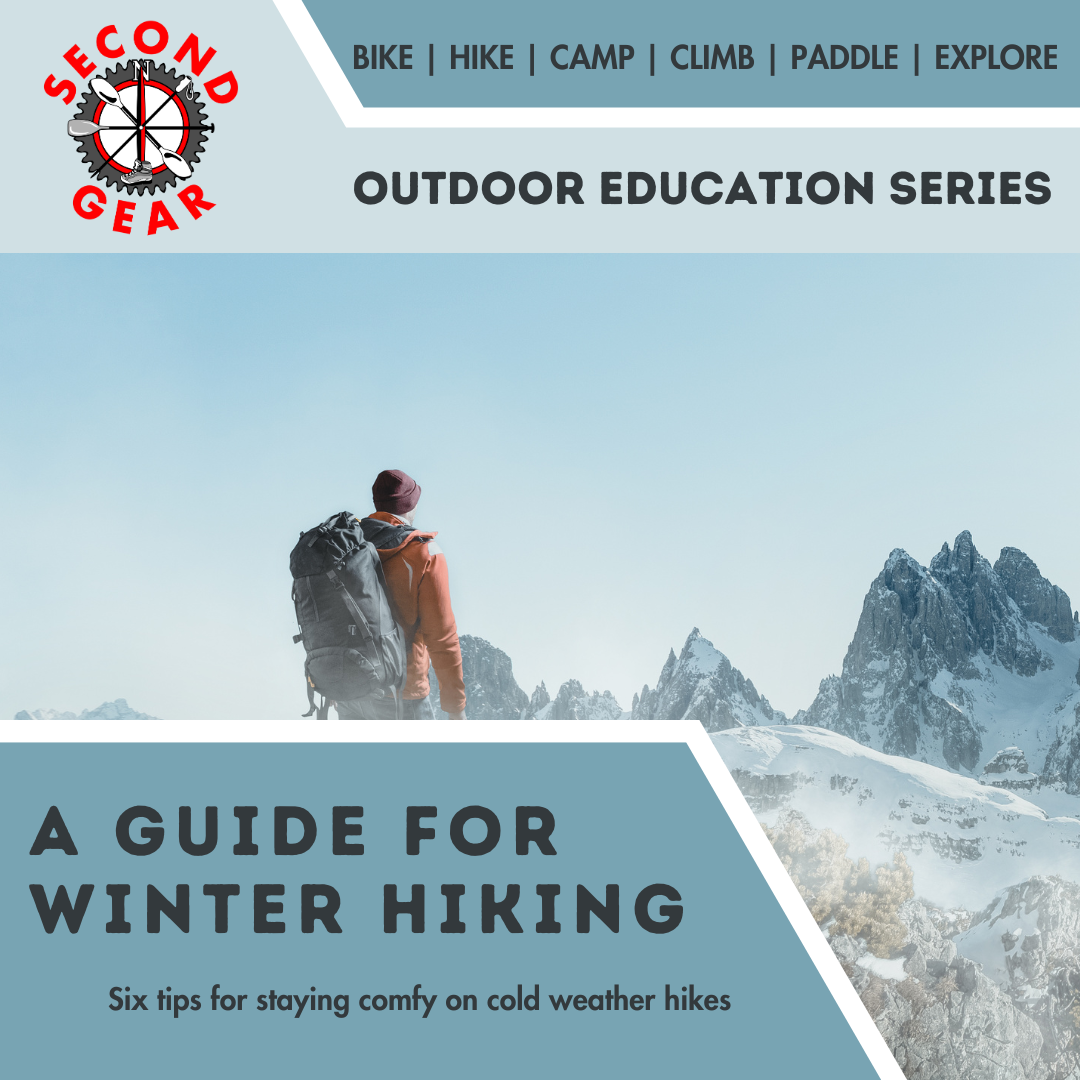Read on for 6 tips & tricks to make the most of your cold weather hiking trips!
1. Layer Up For Comfort
Proper layering is the SECRET to staying comfy outdoors!
With the right gear, you can easily conquer cold temperatures, high winds, and any rain or snow that might come your way - without sacrificing your comfort.
What do you need?
-
Base Layer: Start with a moisture-wicking base layer to keep sweat away from your skin. We love merino wool base layers for their oder resistance, temperature regulation & breathability!
-
Insulating Layer: Add an insulating layer for warmth; think fleece or down jackets.
- Outer Layer: Finish with a waterproof and windproof outer layer to shield against the elements.
This combination of layers should help you stay prepared for any potential weather conditions. Once you've mastered the art of layering, you can quickly add or remove layers during your hike to suit your changing needs.
Plus it's always a good idea to leave some extra comfy clothes for yourself back at your car or base camp.
2. Stay Hydrated
It's easy to remember to drink water in the heat of the summer, but sometimes cold weather hiking can trick us into thinking we're not thirsty.
Don't be fooled - staying hydrated is important no matter the temperature!
-
Bring a Water Bottle or Hydration Pack: If temperatures are low enough, you'll want to bring an insulated water bottle or hydration pack to prevent potential freezing.
- Warm Beverages: For added comfort in the cold, consider bringing a thermos filled with a warm beverage like your favorite type of tea. But remember, this isn't a replacement for drinking water!
3. Plan Ahead & Know Your Trail
Don't just wander off into the wilderness without a plan! Research your trail before you begin your hike so that you know what to expect in terms of length & elevation.
-
Bring a Map: Good old fashioned paper maps are always a dependable choice because, you know, their batteries never die. If you opt for a digital map on your phone or gps - be sure your device is fully charged.
-
Time Your Hike: Be sure to know how long your hike will take and always leave yourself extra time. Remember, in the winter the sun sets earlier so be sure you have plenty of daylight time before beginning your hike!
- Emergency Essentials: We know you already have a water bottle, but make sure you have some other essentials as well. An emergency blanket, headlamp, first aid kit and fully charged phone/power bank will help keep you safe in case of emergency situations.
4. Protect Your Feet
When it comes to hiking, your feet do most of the work! You won't regret the extra money you spend on protecting and nurturing your feet.
-
Wear High Quality Socks: Trust us, a good pair of socks will truly make all the difference. We're partial to Darn Tough's amazing merino wool socks, but there are other great brands out there too!
- Wear High Quality Hiking Boots Or Shoes: There are a lot of great brands out there and no one-size-fits-all approach to footwear, but having the right shoes for your hike is essential. If it's going to be really cold or wet, consider wearing insulated and waterproof footwear. If you'll be braving icy conditions, consider crampons to provide extra grip and traction.
5. Hats & Gloves To Keep You Warm
Don't forget about your extremities! A simple beanie and pair of gloves will go a long way towards keeping you comfortable in the cold.
-
Proper Headwear: Even if you have a hooded jacket already, don't overlook how much a beanie can help keep your head & ears warm! Neck gaiters can help you retain even more body heat & protect against wind.
- Gloves or Mittens: Don't let your fingers freeze! If it's going to be really cold, you might want to consider glove liners & insulated/waterproof gloves on top of that.
6. Start Small & Don't Give Up
Winter hiking doesn't have to be an arctic expedition! Don't let lofty goals keep you from getting your daily dose of fresh air and vitamin D - even if it's just for a few minutes!
-
Get Warmed Up: Don't get scared away if you're feeling cold at the very beginning of the hike. Once you get your body moving you'll quickly create some body heat to keep you warm.
-
Start with Short Hikes: You can always work your way up to those 10+ mile hikes! Start with easily accessible trails that have low elevation gain to help get yourself acclimated to hiking in the wintertime.
- Find A Hiking Buddy: Sometimes we need a friend to help motivate us! Find a hiking buddy (or buddies) to help keep you accountable to those trail goals.
What Gear Should I Buy?
Well, it depends on your unique circumstances!
In general, we suggest sticking to high quality outdoor gear brands and buying pre-owned gear whenever possible to help keep gear in use and out of landfills!
Some of our favorite brands producing high quality outdoor apparel & footwear include; Patagonia, Outdoor Research, Smartwool, Darn Tough, Keen, Winter's Edge, Mac in a Sac, Arc'Teryx, Sorel, North Face & so many more!
We invite you to explore some of our consignment selects online and visit Second Gear in person for our full selection of new & used outdoor gear, apparel & footwear!
If you still have questions about what gear is best for you and your adventures, our staff is always happy to help!

